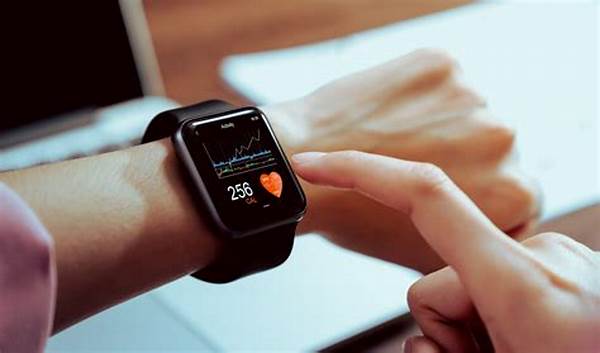Introduction to Wearable Threat Detection Gadgets
In recent years, the advancement of technology has led to significant innovations in the field of security and safety. Wearable threat detection gadgets have emerged as a revolutionary solution to address the growing concerns related to personal and public safety. These sophisticated devices are designed to provide real-time monitoring and alert systems for various potential threats, ranging from environmental hazards to security breaches. The integration of these gadgets in everyday life enhances the ability of individuals and organizations to respond swiftly and effectively to imminent dangers.
The development and deployment of wearable threat detection gadgets are driven by the necessity to bolster security measures in an increasingly unpredictable world. These gadgets incorporate cutting-edge technologies such as sensors, biometrics, and artificial intelligence to offer comprehensive surveillance capabilities. As a result, they serve as crucial tools in safeguarding individuals and facilities by offering insights that would otherwise be challenging to obtain through traditional security methods.
By implementing wearable threat detection gadgets, users can experience an elevated sense of safety and assurance. These devices can seamlessly integrate with other security systems to deliver advanced threat detection and response strategies. The potential impact of these gadgets on personal and societal security dynamics cannot be overstated, as they promise to transform the landscape of threat detection and management.
Features of Wearable Threat Detection Gadgets
Wearable threat detection gadgets are equipped with an array of advanced sensors that can detect a variety of threats, including chemical, radiological, and biological hazards. These sensors continuously monitor the environment, providing users with real-time alerts.
The integration of artificial intelligence in wearable threat detection gadgets enables predictive analytics, allowing users to anticipate potential threats and take preemptive measures. This capability significantly enhances the overall effectiveness of threat management.
These gadgets are designed with user-centric interfaces, making it easy for individuals to understand and respond to threat alerts. The intuitive design ensures swift action can be taken when a threat is detected, thus minimizing risk.
Wearable threat detection gadgets are often compatible with existing communication infrastructure, enabling seamless data transmission and real-time communication with emergency services. This connectivity ensures timely and coordinated responses to emerging threats.
The durability and reliability of wearable threat detection gadgets are paramount. These devices are built to withstand harsh conditions and are equipped with long-lasting power sources to ensure uninterrupted operation in critical situations.
Importance of Wearable Threat Detection Gadgets
The significance of wearable threat detection gadgets cannot be underestimated in today’s security landscape. These devices represent a crucial leap forward in the fight against both conventional and unconventional threats. As the global environment becomes more complex and technological advancements continue to evolve, the implementation of wearable threat detection gadgets becomes imperative.
Organizations and individuals alike benefit from the advanced capabilities offered by these devices. For instance, in the context of industrial settings, wearable threat detection gadgets can safeguard workers from hazardous materials exposure and other environmental risks. Similarly, in law enforcement and emergency services, these gadgets provide invaluable support in identifying and neutralizing threats efficiently.
Furthermore, the integration of wearable threat detection gadgets into public spaces greatly enhances collective safety measures. These devices serve as an added layer of security, complementing traditional measures to ensure a more robust response to threats. The adaptability and sophistication of these gadgets empower both individuals and institutions in their ongoing commitment to safety and security.
Application Scenarios for Wearable Threat Detection Gadgets
Wearable threat detection gadgets can be used in healthcare settings to protect both patients and staff from infectious diseases. By monitoring biological threats, these gadgets enhance patient safety and contribute to effective infection control protocols in medical facilities.
In the military domain, wearable threat detection gadgets provide soldiers with crucial information about potential chemical or radiological hazards on the battlefield. This real-time data significantly enhances situational awareness and operational effectiveness.
Educational institutions also benefit from wearable threat detection gadgets. By detecting potential threats such as unauthorized weapons or hazardous substances, these devices contribute to creating a safe and secure learning environment for students and staff alike.
Wearable threat detection gadgets are increasingly utilized in public transportation systems to monitor for signs of terrorist activities, including the presence of explosives. Their use in these settings reinforces overall security measures, ensuring passenger safety.
The applicability of wearable threat detection gadgets extends to corporate environments, where they help to secure sensitive areas from unauthorized access and detect potential vulnerabilities. These gadgets ensure the protection of valuable assets and intellectual property.
Advantages of Wearable Threat Detection Gadgets
The most prominent advantage of wearable threat detection gadgets is their ability to provide instantaneous alerts, enabling timely responses to threats. This rapid response capability significantly mitigates potential risks and prevents escalation.
The portability and convenience offered by wearable threat detection gadgets allow individuals to carry them effortlessly as part of their daily routines. This ease of use ensures widespread adoption and integration into various environments.
Moreover, the data collected by wearable threat detection gadgets can be analyzed to identify trends and patterns, which aids in developing comprehensive threat prevention strategies. This analytical capability empowers users with actionable insights for enhanced security management.
These gadgets support the integration of additional security layers by providing real-time data feeds to centralized monitoring systems. This integration facilitates coordinated responses across different security platforms, enhancing overall threat management efficiency.
Wearable threat detection gadgets are designed to be highly customizable, allowing users to tailor their features to specific needs and contexts. This flexibility ensures that the devices can be effectively deployed in diverse scenarios, addressing a wide range of security challenges.
Challenges and Considerations in Deploying Wearable Threat Detection Gadgets
Despite their numerous benefits, the implementation of wearable threat detection gadgets poses certain challenges. Ensuring compatibility with existing security systems and infrastructure can be complex, requiring careful planning and coordination.
The cost associated with deploying these advanced gadgets can be prohibitive for some organizations, particularly smaller entities with limited budgets. It is essential to balance cost considerations with the critical need for enhanced security measures.
Privacy concerns also arise with the use of wearable threat detection gadgets, as they involve continuous data collection and monitoring. Addressing these concerns requires strict adherence to data protection regulations and transparent communication with users.
Additionally, the reliability of wearable threat detection gadgets in extreme conditions is a key consideration. Ensuring consistent performance in varied environments necessitates robust design and rigorous testing.
The successful deployment of wearable threat detection gadgets hinges on user training and awareness. Comprehensive training programs are essential to ensure that users are proficient in operating these devices and responding to alerts efficiently.
Conclusion: The Future of Wearable Threat Detection Gadgets
In summation, wearable threat detection gadgets represent a transformative advancement in the domain of security technology. Their ability to provide instantaneous and accurate threat detection positions them as invaluable tools in safeguarding individuals and organizations against a myriad of threats. As these gadgets continue to evolve, their integration into various security frameworks will further enhance their efficacy and reliability.
The future of wearable threat detection gadgets is poised for significant growth, with ongoing innovations paving the way for even more sophisticated and versatile devices. As stakeholders prioritize security in an ever-changing landscape, these gadgets will be at the forefront of efforts to preempt and mitigate threats. The commitment to leveraging wearable threat detection gadgets as part of comprehensive security strategies is imperative in ensuring the safety and well-being of people worldwide.





